A complex of the lipid transport ER proteins TMEM24 and C2CD2 with band 4.1 at cell-cell contacts
- PMID: 39158698
- PMCID: PMC11334333
- DOI: 10.1083/jcb.202311137
A complex of the lipid transport ER proteins TMEM24 and C2CD2 with band 4.1 at cell-cell contacts
Abstract
Junctions between the ER and plasma membrane (PM) are implicated in calcium homeostasis, non-vesicular lipid transfer, and other cellular functions. Two ER proteins that function both as tethers to the PM via a polybasic C-terminus motif and as phospholipid transporters are brain-enriched TMEM24 (C2CD2L) and its paralog C2CD2. We report that both proteins also form a complex with band 4.1 family members, which in turn bind PM proteins including cell adhesion molecules such as SynCAM 1. This complex enriches TMEM24 and C2CD2 containing ER/PM junctions at sites of cell contacts. Dynamic properties of TMEM24-dependent ER/PM junctions are impacted when band 4.1 is part of the junction, as TMEM24 at cell-adjacent ER/PM junctions is not shed from the PM by calcium rise, unlike TMEM24 at non-cell adjacent junctions. Lipid transport between the ER and the PM by TMEM24 and C2CD2 at sites where cells, including neurons, contact other cells may participate in adaptive responses to cell contact-dependent signaling.
© 2024 Johnson et al.
Conflict of interest statement
Disclosures: All authors have completed and submitted the ICMJE Form for Disclosure of Potential Conflicts of Interest. T. Biederer reported grants from Reckitt Benckiser LLC outside the submitted work. No other disclosures were reported.
Figures
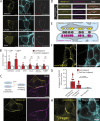


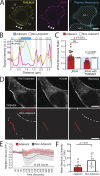
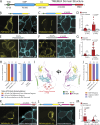
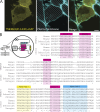
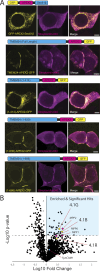

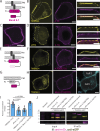
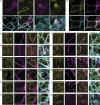
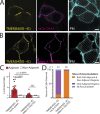
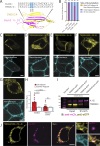
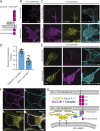
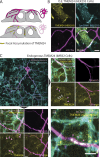
Update of
-
A complex of the lipid transport ER proteins TMEM24 and C2CD2 with band 4.1 at cell-cell contacts.bioRxiv [Preprint]. 2023 Dec 6:2023.12.06.570396. doi: 10.1101/2023.12.06.570396. bioRxiv. 2023. Update in: J Cell Biol. 2024 Nov 4;223(11):e202311137. doi: 10.1083/jcb.202311137. PMID: 38106008 Free PMC article. Updated. Preprint.
References
MeSH terms
Substances
Grants and funding
LinkOut - more resources
Full Text Sources
Molecular Biology Databases
Miscellaneous

